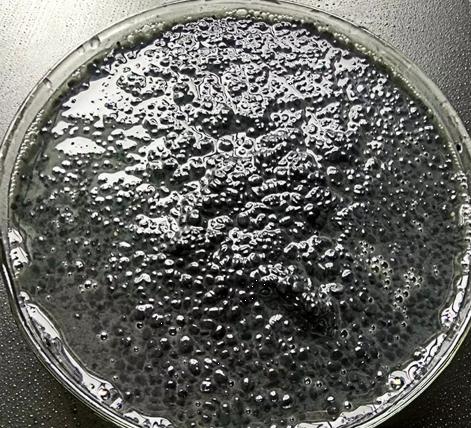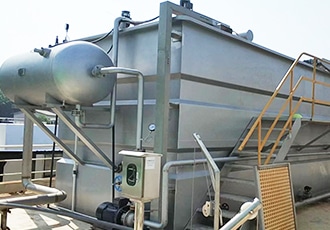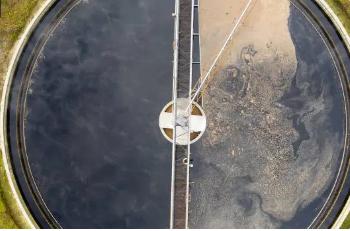Wastewater treatment degrades organic matter into more stable and environmentally friendly products through the action of microorganisms. To ensure the efficient operation of an activated sludge system, the key is to maintain an adequate supply of oxygen, reasonable contact between the effluent and microorganisms, and to keep the microbial community stable.
Definition Of Activated Sludge Microorganisms
What are activated sludge microorganisms?
These microorganisms exist in the form of “activated sludge” in wastewater treatment systems and are the main biochemical treatment unit in the wastewater treatment process. Activated sludge microorganisms are a group of tiny organisms that play a key role in wastewater treatment systems. They include bacteria, fungi, protozoa, and other microorganisms.

Role In Wastewater Treatment
In an activated sludge system in a wastewater treatment plant, microorganisms come into contact with the effluent in a mixed manner, utilizing oxygen and other nutrients for growth and reproduction. In the process, they consume organic matter, viruses, bacteria, and other microorganisms and convert them into simpler compounds such as carbon dioxide, water, and biomass.
The activity and abundance of these microorganisms are affected by many factors, including temperature, pH, oxygen content, and the type and concentration of organic matter. Therefore, it is important to manage and control these factors to maintain healthy microorganisms and optimal biochemical activity in wastewater treatment.
Important Indicators Of Activated Sludge Microorganisms
| Indicator | Description |
| Mlss | Reflects the concentration of activated sludge in the treatment system, i.e. the solid content of the sludge. |
| Mlvss | Indicates the concentration of organic and biomass in the activated sludge. |
| Ammonia and nitrite | Microbial degradation processes of ammonia and nitrogen. The presence of nitrite can indicate the process of denitrification |
| DO (Dissolved oxygen) | Reflects the respiration of microorganisms in the pool. |
| Dissolved organic matter (COD/BOD) | Reflects the concentration of organic matter in the effluent and is a source of energy for microbial metabolism. |
| Sludge activity | Sludge degradation capacity and reaction rates are evaluated by specific tests. |
| Sludge settling performance | Evaluate the rate at which activated sludge agglomerates and settles, which directly affects the separation and cleaning effectiveness of the system. |
Microbial Multiplication In Activated Sludge
Microbial colonization and growth in activated sludge is a complex process involving their metabolic activities, nutrient uptake and cell division.
- Nutrient uptake: Microorganisms obtain the nutrients they need from the environment, such as organic matter, inorganic salts and oxygen. These nutrients are necessary for their growth and reproduction.
- Growth: Microorganisms utilize the acquired nutrients for growth through metabolic processes. They convert these substances into energy and cellular components, including proteins, nucleic acids and lipids.
- Cell division: After growth, microorganisms undergo cell division. This is a key step in the growth of a microbial population. Under proper environmental conditions, microorganisms will divide into two or more cells, thus increasing the number of the entire microbial population.
- Utilization and regeneration of nutrients: Microorganisms utilize organic and inorganic substances from the environment as cellular components and also release these substances again into the surrounding environment through the production of new cells.
In an activated sludge system, continuous mixing and aeration provide the microorganisms with suitable environmental conditions, including sufficient oxygen and nutrients. This helps the microorganisms to grow and multiply and keeps them active.
Activated Sludge Process
Aeration Tank
Inlet and mixing: Sewage enters the aeration tank, mixing equipment (usually agitators or dissolved air flotation) to keep the organic matter in the sewage and microorganisms fully mixed to promote contact and degradation of microorganisms and organic matter.

Activated Sludge
Microbial attachment: Organic matter in sewage attracts microorganisms, which form a kind of “activated sludge” in the water, and these microorganisms attach to the surface of organic matter and degrade it. The microorganisms use the organic matter in the wastewater as food, growing and reproducing by breaking down the organic matter and converting it into carbon dioxide, water and biomass.
Clarifier
Solid-liquid separation: After treatment by the activated sludge system, the effluent and activated sludge enter the clarifier. Here, the heavier activated sludge is deposited to the bottom to form a sludge layer, while clear water flows out from the top.
Return Flow: A portion of the settled sludge is returned to the aeration tank to maintain proper microbial concentration and activity, called return sludge.

Sludge Treatment
Sludge treatment and reuse: After settling, activated sludge needs to be treated and common methods include sludge thickening, dewatering, digestion or sludge incineration. Some of the treated sludge may be used for soil reclamation or energy recovery.
Monitoring And Regulation
Water quality monitoring: Continuous monitoring of effluent and treated water quality to ensure that effluent meets established discharge standards.
Activated Sludge Microorganisms In Aeration Tank
- Bacteria – aerobic bacteria remove organic nutrients.
- Protozoa – removal and digestion of dispersed bacteria and suspended particles.
- Long-lived systems dominated by postulates, including lagoons.
- Filamentous bacteria swell sludge (poorly settled and turbid effluent).
- Algae and fungal fungi with pH changes and older sludge.
Do Activated Sludge Microorganisms Need Dissolved Oxygen?
Activated sludge microorganisms typically require dissolved oxygen (DO) to maintain their ability to grow, metabolize, and degrade organic matter. In an activated sludge system, the microbial need for oxygen is very important because oxygen is necessary for microbial respiration and energy metabolism processes.
Microorganisms obtain energy by oxidizing organic matter and converting it into energy for growth and reproduction. This process requires an adequate supply of oxygen to support microbial metabolic activity. In the absence of oxygen, microorganisms may not be able to fully utilize the organic matter, resulting in reduced treatment efficiency and possible generation of incomplete degradation products.
Activated Sludge Process Troubleshooting
1. Insufficient dissolved oxygen
- Problem: Inadequate oxygen supply may result in reduced microbial activity, affecting degradation efficiency.
- Troubleshooting: Check whether the aeration system is working properly to ensure sufficient oxygen supply.
2. MLSS (Mixed Liquid Solids Suspended) too low or too high
- Problem: Low MLSS may lead to a decrease in treatment efficiency, while high MLSS may trigger excessive sludging.
- Troubleshooting: Monitor the sludge concentration and adjust the reflux ratio to control the MLSS concentration.
3. Excessive Foaming
- Problem: Excessive effluent surface foaming may indicate a microbial imbalance or high organic matter content.
- Troubleshooting: Reduce organic loading, increase oxygen supply, or add anti-foaming agents to resolve foam problems.
4. Excessive suspended solids in clarifiers
- Problem: Excessive suspended solids can affect water purification.
- Troubleshooting: Increase clarifier settling time, reduce water intake, or improve sludge return quality to promote solid-liquid separation in the clarifier.
5. Excessive sludge concentration
- Problem: High sludge concentration may affect treatment efficiency.
- Troubleshooting: Adjust the aeration system, increase the sludge return ratio or clean the sludge regularly to control the sludge concentration.
6. Abnormal pH
- Problem: Abnormal pH may affect microbial growth and activity.
- Troubleshooting: Monitor pH and add chemicals as needed to adjust to maintain proper range.
Summary
Activated sludge is a biological method of wastewater treatment that utilizes microorganisms to convert organic wastes into more stable and harmless substances. Maintaining a proper supply of oxygen, ensuring adequate contact between the effluent and the activated sludge, and maintaining the stability of the microbial population are essential to ensure treatment efficiency and excellent performance in terms of final water quality.
As a manufacturer in the water treatment industry, KUOSI is able to offer a wide range of specialized equipment for you to choose from, including filter presses, paddle dryers, dosing systems, sodium hypochlorite machines, and grit classifiers. Contact us and a team of technical professionals will customize the most suitable solution for you.
